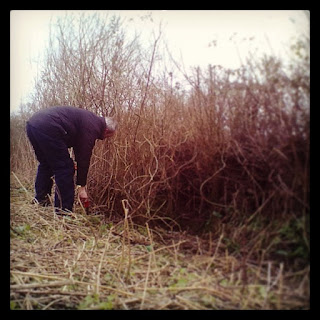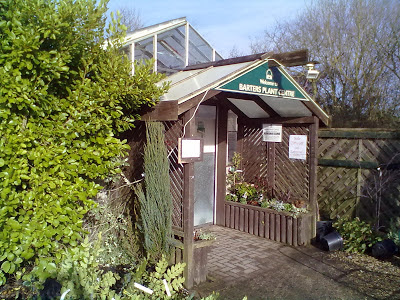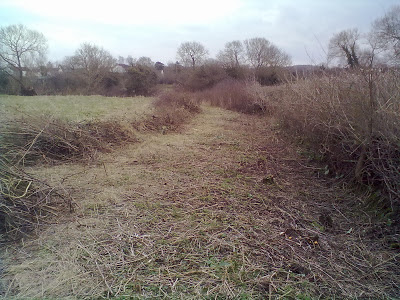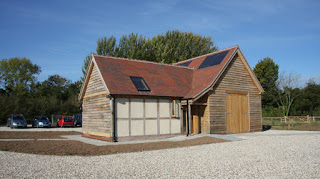Advice from the masters:
I had been putting today off for a while, hoping that our efforts at ploughing a few weeks back were not in vain. I was fearful that the clods of turned earth hadn't settled enough to starve out the pasture grass beneath and there would be tufts spurting out from every crevice.
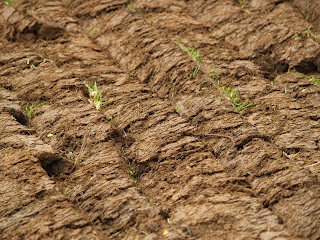
Also, there was the task of strimming the grass edges to tackle. but thankfully the blackthorn I removed back in February has only regrown a little.
Today was an extremely hot day, even at 9am. Though I was very pleased to see that my initial fears were eased as the grass had died back really well, leaving just lovely loamy soil.
I kitted up with my strimmer and took to removing a 2 metre section of grass from the edges of the ploughed area. The grass that remained was incredible, it had so many species within it and became apparent that this was the very reason that my Grandad had used Jersey cows here for grazing. There was a vast amount of buttercups too.
Planning for the apple trees:
This info is a bit techy, but may be useful to others who consider planting their own cider orchard:
After strimming I decided to lay out a rough plan of the locations for the apple trees. I've decided on 8 rows of trees, containing about 20 to 25 trees in each row. These rows are spaced at 3.5 to 4 metres in all directions.
With bamboo canes and tape measure in hand I paced out the site and stuck the canes in at intervals.

Dosage rates as suggested by Brogdale in Kent
This was my guide to add some lime to the exposed soil prior to rotavating. The soil test I had done in December last year from the Brogdale Orchard Nursery in Kent has given me an indication of the amount needed to apply. At first I was unsure the best method to do this and settled on ploughing first, then adding lime and other fertilisers, followed by tree planting and then re-seeding with orchard friendly grass.
I've received some excellent advice from John Worle in Herefordshire (
http://www.johnworle.co.uk/) who suggested that the lime can be added in stages during planting (into the hole) and then afterwards around the tree over the following 3 years.
This should be easier than attempting to add lime to the entire field, which could be costly in both time and dough.
I must add that preparing the land at this time of year is unusual We would normally start late winter or early spring but due to the bad weather (and waiting for the ebay orders to come through!) we have done all of this a little later.
This coming Tuesday I'll be rotavating the soil, to level it out and then this will be watched over for the next few months until it's ready to plant up in December/January time.
In a few weeks time I'm going to the nursery to see how my grafted trees are coming on, I can't wait, It's like having 40 new children!


